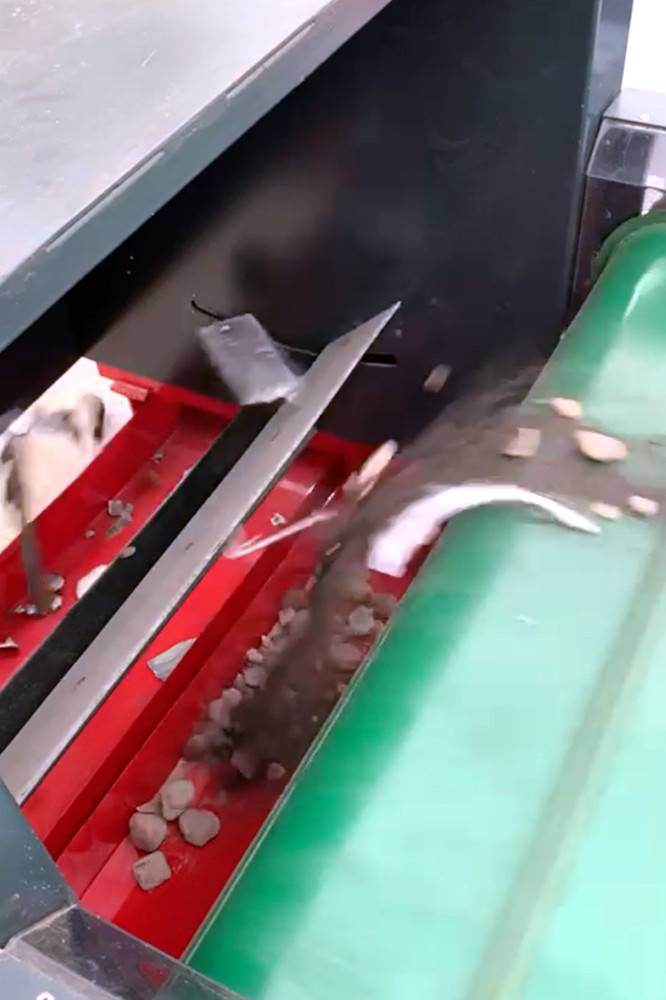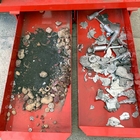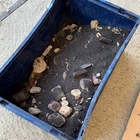14. 3. 2024
Separation of residual aluminum particles from foundry sand (case study)

Initial status
Our customer - an aluminum foundry – needed to separate residual aluminum pieces from foundry sand.
Problem
It is not possible to separate aluminum waste foundry sand using a conventional magnetic separator (as it can only remove tramp iron). However, in this case the client needed to separate the non-magnetic aluminum from the foundry sand.
Solution
The non-ferrous metals can be separated by special magnetic separators based on eddy currents. That is why these separators are called eddy current separators (or non-ferrous metal separators). They include a magnetic cylinder (rotor) with very strong magnets, which at high revolutions (when the magnetic poles alternate rapidly) creates a magnetic field that magnetizes even non-ferromagnetic metallic materials for a short term.
The magnetic polarity of the particles magnetized in this way is the same as the polarity of the magnetic field created by the separator rotor. Therefore, magnetized materials are repelled and automatically ejected out of the conveyor belt.
There are two main types of eddy current separators:
- Separators with concentric magnetic rotors (ECS-C RAM)
These separators are designed for the separation of larger metal pieces (from 50 mm). Their advantages are the lower price and high processing capacity. The rotor comprises 4 magnetic poles. - Separators with eccentric magnetic rotors (ECS-E BULL)
Thanks to their design, they allow the induction of a strong magnetic field and are thus suitable for the separation of even very small metal particles (from 5 mm).
Since the customer requested to separate residual aluminum particles larger than 50 mm, we chose the ECS-C 1000 RAM separator with a concentric magnetic rotor. The foundry sand is transported with a conveyor belt of 1000 mm. A precondition for the successful separation of non-ferrous metals is a uniform distribution of the treated material on the ECS separator belt. To achieve the best possible material spreading, we placed a vibrating feeder in front of the ECS separator.
Benefits of using the eddy current separator ECS-C 1000 RAM
Because we used the ECS separator with a concentric magnetic rotor, we could efficiently separate the aluminum waste from foundry sand.
The customer is satisfied with our solution, as the required purity of the foundry sand has been achieved and the separated aluminum waste is reused.
The advantage is that the pieces of the residual aluminum are larger than 50 mm, so it was possible to use a model with a concentric magnetic rotor. This model is significantly cheaper than the ECS separator with an eccentric magnetic rotor. Thanks to the favorable price of ECS-C RAM, the investment return is attractive.
Applied equipment: Eddy current separator ECS-C 1000 RAM
Advanteges of the Eddy Current Separator ECS-C 1000 RAM
- Separation of metal particles from 50 mm
- Concentric rare earth rotor
- Magnetic rotor comprising 4 poles
- Working widths from 500 to 2 000 mm


